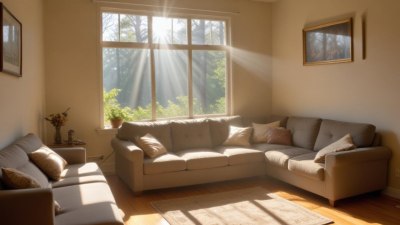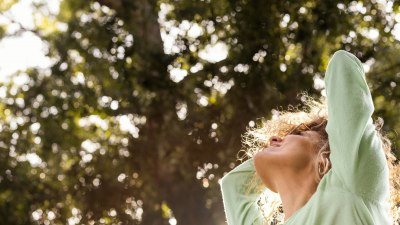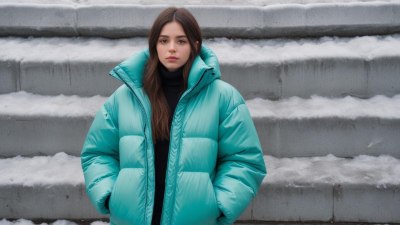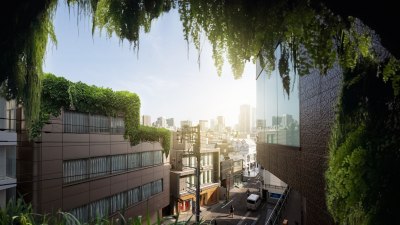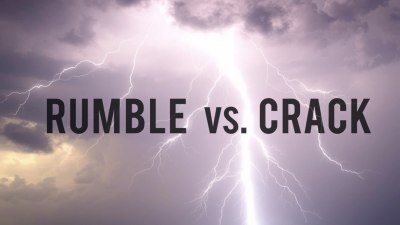Why Folding a Lawn Chair Is Easier When There's a Breeze
Explore how a breeze affects lawn chair folding, reducing effort and preventing issues by minimizing resistance and aiding movement.
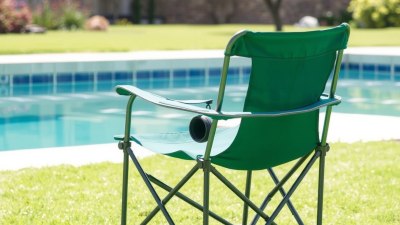
Image created with Flux Schnell
Folding a lawn chair might seem like a straightforward task, but anyone who has struggled with it knows the subtle factors that can make the job easier or more difficult. One interesting observation is that folding a lawn chair feels noticeably easier when there's a gentle breeze blowing. This phenomenon is rooted in practical physics and ergonomics, where the environmental conditions play a subtle yet impactful role in mechanical effort. Understanding why this happens requires a look at the mechanics of folding lawn chairs, the influence of airflow on objects, and the way our bodies interact with these elements during the process.
Most lawn chairs are designed with joints and hinges that allow them to fold compactly for transport and storage. These folding mechanisms rely on the relative movement of different parts sliding past or rotating around each other. When you fold the chair, you apply force to overcome friction and any resistance caused by the chair's structural design or dirt accumulation in the joints. In calm air conditions, the chair’s fabric and frame are static, which means your hands and arms must generate all the force needed to fold and compress the parts together.
Introducing a breeze changes the dynamics. When there is airflow, several key factors come into play. Firstly, the breeze can cause the chair’s fabric or flexible components to flutter slightly. This movement can help by reducing the static friction between the fabric and frame, much like shaking a stuck zipper to get it moving again. As the fabric shifts minutely, it becomes easier to compress or realign sections of the chair, making folding smoother and requiring less effort.
Secondly, the breeze can help in stabilizing the chair during folding. Folding a lawn chair often involves holding it in an awkward position, where letting go briefly is difficult without losing control. A gentle airflow counteracts minor wobbles and movements, essentially providing natural support against the wind’s resistance. This might seem paradoxical, but a steady breeze helps maintain the chair’s position by counterbalancing your push or pull in a dynamic way, which decreases the friction your hands must overcome to reposition parts.
In addition, airflow around the chair can thin the layer of still air that typically surrounds any object, known as the boundary layer. In still air, this boundary layer creates a small cushion of resistance that affects how easily parts slide past each other. When a breeze is present, it disrupts this cushion and replaces it with a more dynamic flow of air, reducing aerodynamic drag on moving components. The parts can move more freely within this airflow, making folding faster and easier.
Beyond the mechanical advantages, the breeze also affects the user's physical state. Folding lawn chairs can require significant arm strength and precise finger dexterity, especially if the chair is large or has tight joints. A breeze can provide a cooling effect on the skin, reducing the tendency to sweat and thus decreasing the chance of slipping grip. Cooler, drier hands hold the chair more securely, which translates into less wasted effort and greater folding efficiency.
Conversely, in extremely calm conditions or stagnant air, the heat and sweat buildup on your hands can make gripping slippery, requiring more force to collapse the chair effectively. This effect becomes even more pronounced in hot weather, where body discomfort adds to the task’s difficulty. Therefore, the breeze indirectly assists by enhancing user comfort as well as the physical interaction with the chair.
The environmental wind also contributes an additional lever-like influence in some scenarios. If a breeze is blowing in the right direction, you might leverage the wind’s pressure against the chair fabric or frame to aid in moving sections apart or together. For instance, a fabric flap might billow out, creating a lifting force that counters the weight of certain parts. This natural leverage reduces the load on your muscles while manipulating the chair. Skilled users might instinctively take advantage of this effect without realizing it.
It is also worthwhile to consider the psychological and sensory aspects brought by the breeze. Handling physical objects in a fresh, moving environment often feels easier simply because the airflow increases arousal and alertness. Your muscles engage more efficiently when not fatigued or overheated, so the breeze contributes not only physically but also mentally by improving coordination and reducing perceived effort.
Various types of lawn chairs respond differently to breezes depending on their materials and designs. Nylon or polyester fabrics with smooth finishes will flutter more with moderate wind, making the folding process noticeably easier as compared to thicker canvas or heavier fabric that may barely move. Chair frames made of aluminum or lightweight steel benefit because their smooth tube surfaces reduce friction and maximize the breeze’s effect. Wooden frames, being heavier and less aerodynamically responsive, gain less from a breeze but still benefit from user comfort improvements.
Maintaining a well-lubricated hinge is another factor that interacts with breezes. When the joints are clean and moving freely, the breeze’s effects on reducing resistance are maximized. Conversely, if the folding mechanism is rusty or gummed up with dirt, the benefits of a breeze are limited since mechanical friction dominates the effort required.
Interestingly, this relationship between airflow and mechanical ease is not limited to lawn chairs. Many foldable or adjustable outdoor furniture pieces experience similar conditions. Folding camping chairs, portable tables, or collapsible utensils all show signs of enhanced ease when there is a light wind. This is a unique interaction between environmental factors and everyday mechanics that can aid in many practical ways.
Moreover, the size and configuration of the chair affect how much the breeze helps. Larger chairs with expansive fabric areas generate more surface area for the wind to act upon, increasing the flutter effects and leverage forces. Compact chairs with minimal fabric might show less pronounced benefits, but even here, the cooling and comfort elements of a breeze help the user.
From a physics perspective, the breeze adds kinetic energy that interacts with the potential energy stored within the stretched fabric or folded joints. The interplay between kinetic and potential energy in this scenario leads to dynamic stability during folding motions, smoothing transitions between states of the chair (from open to folded) and reducing the effective energy your muscles must supply. This subtle energy exchange optimizes the folding action even though it is mostly imperceptible without close observation.
Additionally, the directionality of the breeze matters. Winds blowing across the chair’s open side can promote more fabric movement and airflow around joints, while wind hitting the back or base might have a muted effect. Understanding these nuances can encourage a more effective folding strategy, such as repositioning the chair relative to the wind to take full advantage of natural assistance.
In practical outdoor situations like parks, beaches, or gardens, this insight offers useful tips for users: attempt to fold your lawn chair facing into or across the breeze for smoother results. Even a small shift in orientation might reduce your effort considerably. Being mindful of your environment can turn a challenging task into a simple routine.
There's also a safety perspective to consider. Folding chairs that require substantial force or awkward handling present risks of pinching fingers, muscle strain, or dropping the equipment. The breeze’s ability to ease these movements reduces accidents and injuries, improving overall user safety. This factor is especially valuable for children, elderly individuals, or anyone with limited hand strength.
Finally, this topic highlights an often-overlooked principle in outdoor equipment design: the importance of considering environmental factors in product usability. The interaction between airflow and folding mechanics suggests opportunities for manufacturers to innovate. For example, they might design lawn chairs that incorporate vents or flexible fabric panels specifically to enhance airflow and ease folding. Such features could revolutionize user experience by leveraging natural forces rather than relying solely on material upgrades or mechanical complexity.
Understanding why folding a lawn chair is easier when there's a breeze opens an intriguing window into the ways subtle environmental elements influence everyday tasks. From physics to ergonomics and psychology, the breeze acts as an unseen partner making a small but significant difference. Next time you fold your chair on a breezy day, you may appreciate how nature lends a helping hand, making your simple chore just a little lighter.


